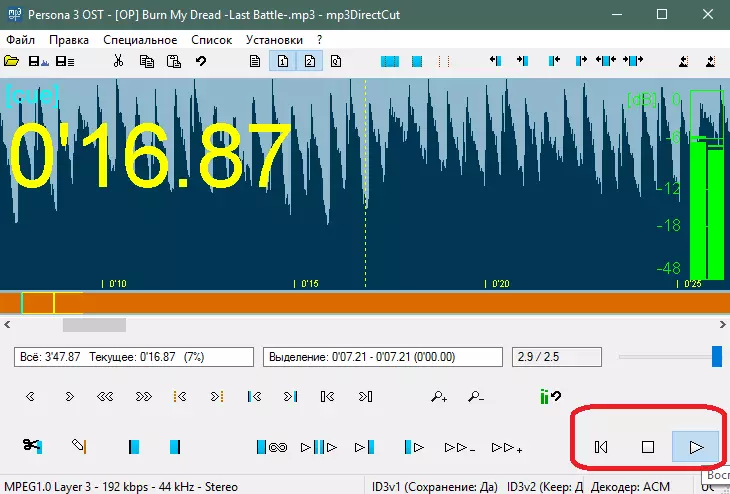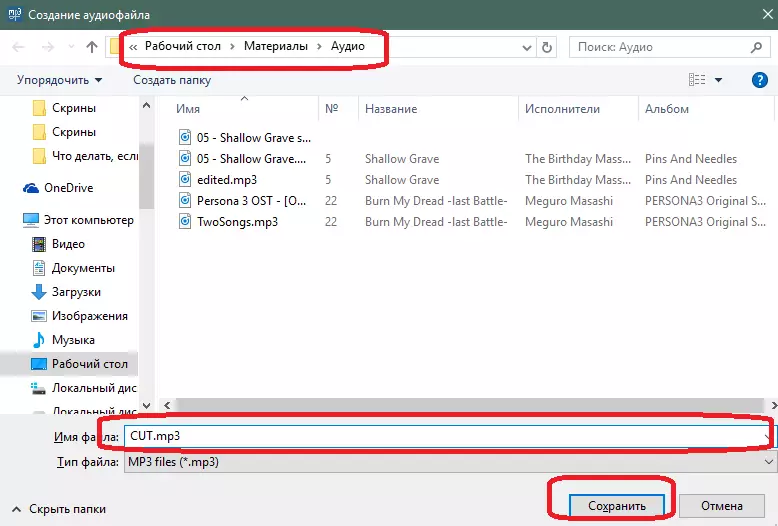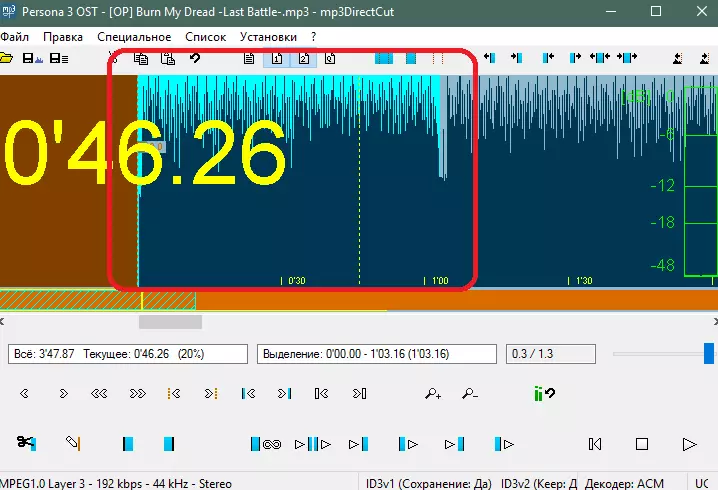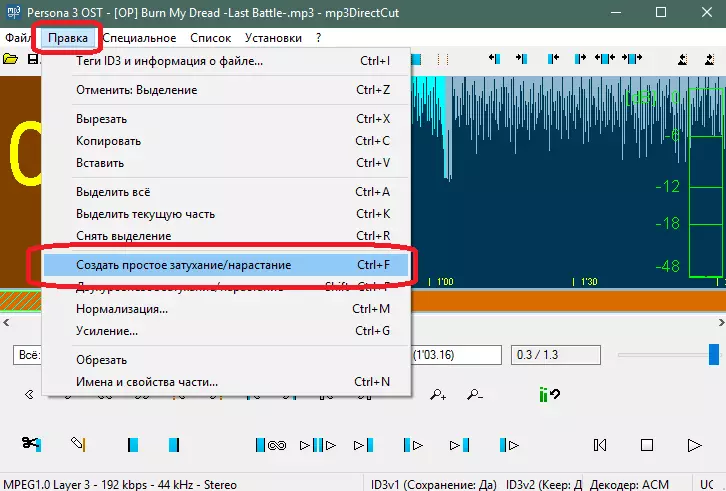
Mp3Directcut is an excellent program for working with music. Using it, you can cut the desired fragment from your favorite song, normalize its sound at a specific volume level, record sound from the microphone and make another series of transformations over music files.
Let's analyze several basic features of the program: how they need to use.
Certain starting from the most frequent application of the program - clippings of an audio from a song.
How to crop music in mp3Directcut
Run the program.

Next, you need to add one audio file that you want to trim. Keep in mind that the program only works with MP3. Transfer the file to the work area of the program.

On the left there is a timer on which the current position of the cursor is indicated. Right - Timeline songs with which you need to work. You can move between passages of music using the slider in the central part of the window.

The display scale can be changed by holding the Ctrl key and turn the mouse wheel.
You can also start playing a song by pressing the appropriate button. This will help determine the site that needs to be cut.

Determine the fragment for clippings. Then select it on the time scale, closing the left mouse button.

It remains very little. Select the File menu item> Save Selection or press the Ctrl + E hot key combination.

Now select the name and location of the cut cut. Press the save button.

After a few seconds, you will receive a MP3 file with a cut-out audio unit.
How to add smooth attenuation / increasing volume
Another interesting feature of the program is to add smooth volume transitions to the song.
For this, as well as in the previous example, you need to highlight a specific fragment of the song. The application will automatically determine the attenuation of this or increasing volume - if the volume increases, then the increase in volume will be created, and vice versa - with a decrease in the volume it will smoothly come.

After you select the site, follow the next path in the top menu of the program: Edit> Create a simple attenuation / increasing. You can also press the combination of hot keys Ctrl + F.

The selected fragment is converted, and the volume in it will grow smoothly. This can be seen by the graphic representation of the song.

Similarly, smooth attenuation is created. Only you need to highlight the fragment in the place where the volume is falling or the song ends.

This technique will help you remove sharp volume transitions in the song.
Normalization of the volume level
If the song has an uneven volume (somewhere too quiet, and somewhere too loud), then the function of the normalization of the volume will help you. It will lead the volume level of about one value throughout the song.
In order to use this opportunity, select Edit> Normalization menu item or press Ctrl + M keys.

In the window that appears, move the volume slider in the desired direction: below - quieter, above - louder. Then press the "OK" key.

The normalization of the volume will be visible on the chart of the song.

Mp3Directcut boasts other interesting opportunities, but their detailed description would be stretched to a couple of such articles. Therefore, we will restrict ourselves to the written - this is quite enough for most users of the MP3Directcut program.
If you have any questions on the use of other program functions - unsubscribe in the comments.
